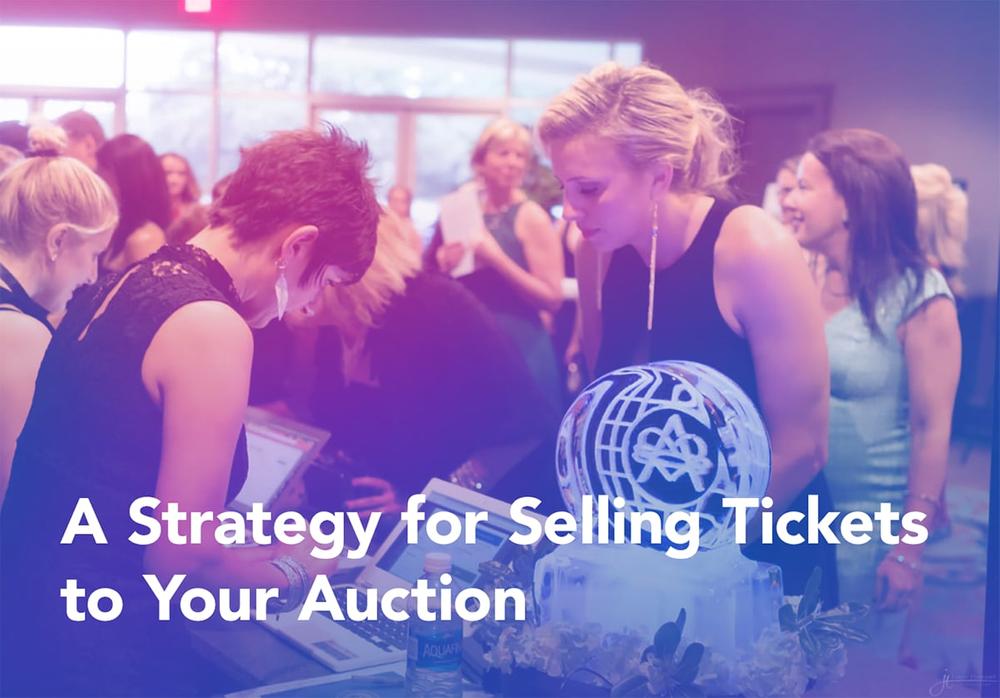Selling tickets effectively is key to hosting a successful auction. Without a thoughtful approach, you might struggle to fill seats or raise as much money. Instead of just trying to fill the venue, focus on reaching different types of guests strategically.
When planning a gala auction, two main things determine your success:
- Auction Items: Do you have exciting items people want?
- Guests to Buy Them: How can you maximize attendance and participation?
By dividing your audience into the following three key groups and assigning clear tasks to your team, you’ll create a vibrant, enthusiastic, and profitable event night.
1. The Big Donors
Auctions usually follow the 80/20 rule: about 20% of your guests will contribute around 80% of your total revenue. Identifying and securing these VIP guests is crucial.
How to find your big spenders:
- Analyze Past Auction Data: Review bidding records from recent years to spot guests who consistently spend big and identify trends in donor behavior.
- Ask Local Organizations: If you are planning a middle school or high school auction, connect with organizers from your feeder elementary schools for recommendations on active, engaged donors you should invite.
Pro Tip
If your auction capacity is 250 people, that typically translates to about 125 bid numbers if most couples share one. Accounting for a few singles, you might end up with around 130 bid numbers. Using the 80/20 rule, 20% of 130 = 26 VIP bidders.
Assign someone on your team to handle this group personally. This team member should invite your VIPs directly and provide personal follow-up. Offering incentives like reserved seating or early VIP access makes them feel valued and excited to attend.
2. Community Members with Limited Budgets
Some community members may not have the financial means to contribute significantly and think auctions “aren’t for them.” However, their participation matters—it fosters inclusivity and builds community ties. Your goal is to ensure they feel welcome.
Ready to Sell More Tickets?
Ways you can make your event accessible:
- Offer discounted or free tickets for volunteers.
- Use Early Bird Specials or limited-time discounts.
- Host giveaways or raffles to win tickets or auction credits.
- Seek local business sponsorships for tickets for teachers or community members.
- Introduce a “pay-what-you-can” option for a limited number of tickets.
- Provide digital attendance with a suggested donation for those who can’t attend in person.
Assign one of your team members to manage this segment, handle invitations, and encourage attendance.
Pro Tip
Local businesses are often willing to sponsor a block of tickets for teachers or community members—don’t hesitate to ask!
3. General Admission Attendees
This group includes most of your guests, those who will buy regular tickets and contribute moderately. Your goal here is to fill your venue efficiently.
Creative ticketing ideas that can increase admission:
- Bundled Offers: Sell tickets with added perks.
- Referral Discounts: Offer half-price guest tickets when someone buys two regular tickets.
- Group Incentives: Encourage businesses, clubs, or friend groups to purchase tables together.
- Sales Contests: Reward guests who sell the most tickets within a specific timeframe.
- Fundraising Thermometers: Use a live tracker of tickets sold to create urgency and encourage sign-ups.
- Last-Minute Flash Sales: Offer discounted tickets just before the event.
Use email campaigns, social media, and posters to reach this audience. Designate someone on your team to track progress and maintain momentum.
Pro Tip
Try a "Bring a Friend" ticket discount to reach new attendees!
Final Thoughts
Events thrive when the community feels included. A thoughtful ticket-selling plan ensures a balanced audience mix, one that reflects your community and maximizes your event’s fundraising potential.
By clearly organizing guests into Big Donors, Community Members with Limited Budgets, and General Admission Attendees—and assigning volunteers to each—you’ll see higher attendance, more inclusivity, and better revenue.
Quick Tips for Keeping Ticket Sales on Track:
- Check ticket sales weekly to spot trends.
- Use testimonials and highlights from past events to encourage sales.
- Set clear ticket sale deadlines to create urgency, especially for Early Bird deals.
- Remind interested guests who haven’t yet bought tickets.
- Encourage volunteers and guests to share the event on social media.
Pro Tip
Regularly track your ticket sales to adjust your strategy as needed, ensuring a full house and an enthusiastic crowd.
With smart planning, you’ll attract a supportive, engaged audience and ensure your auction’s success. Balancing accessibility, exclusivity, and community engagement helps everyone feel welcome and ready to participate.




